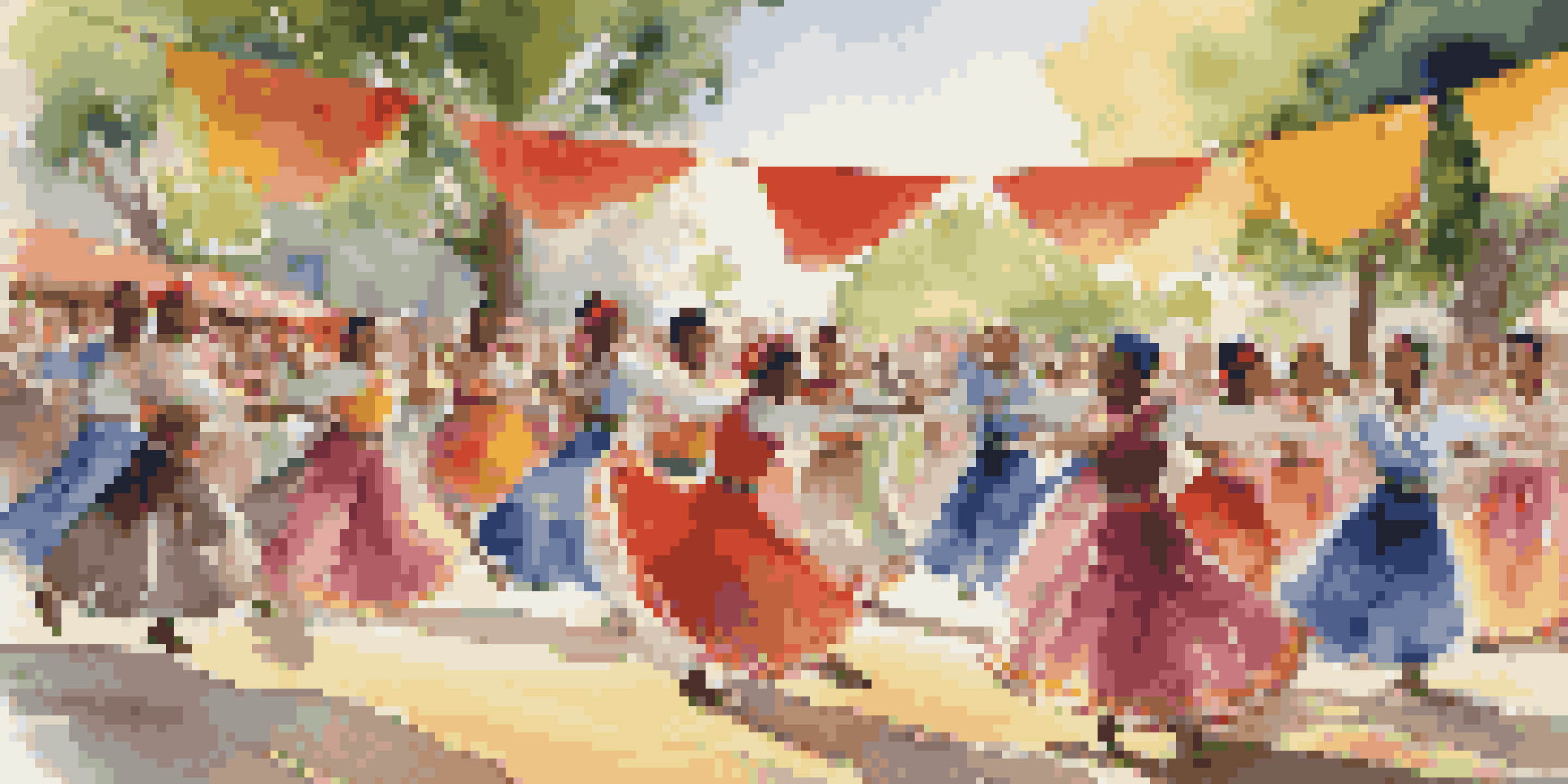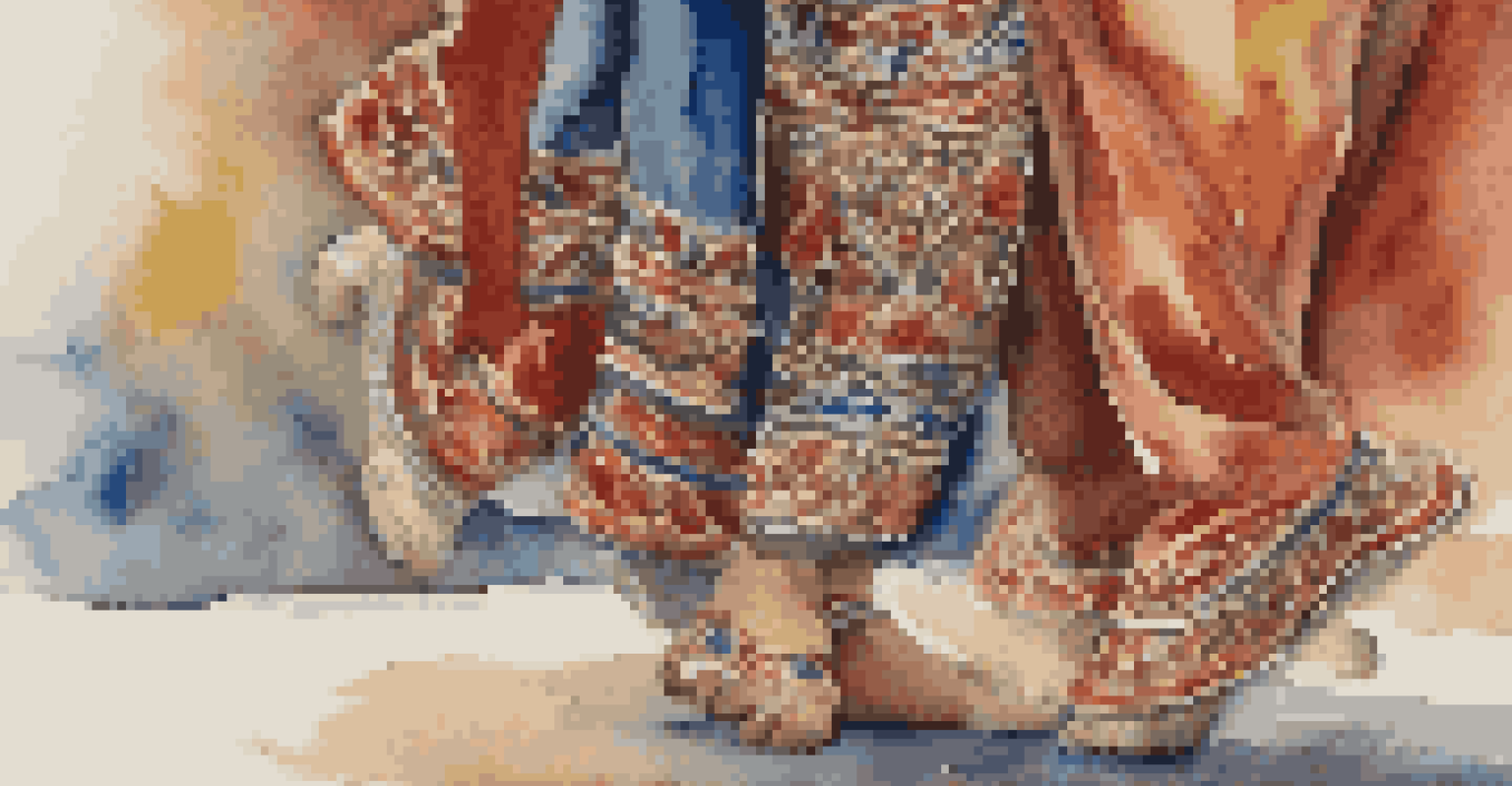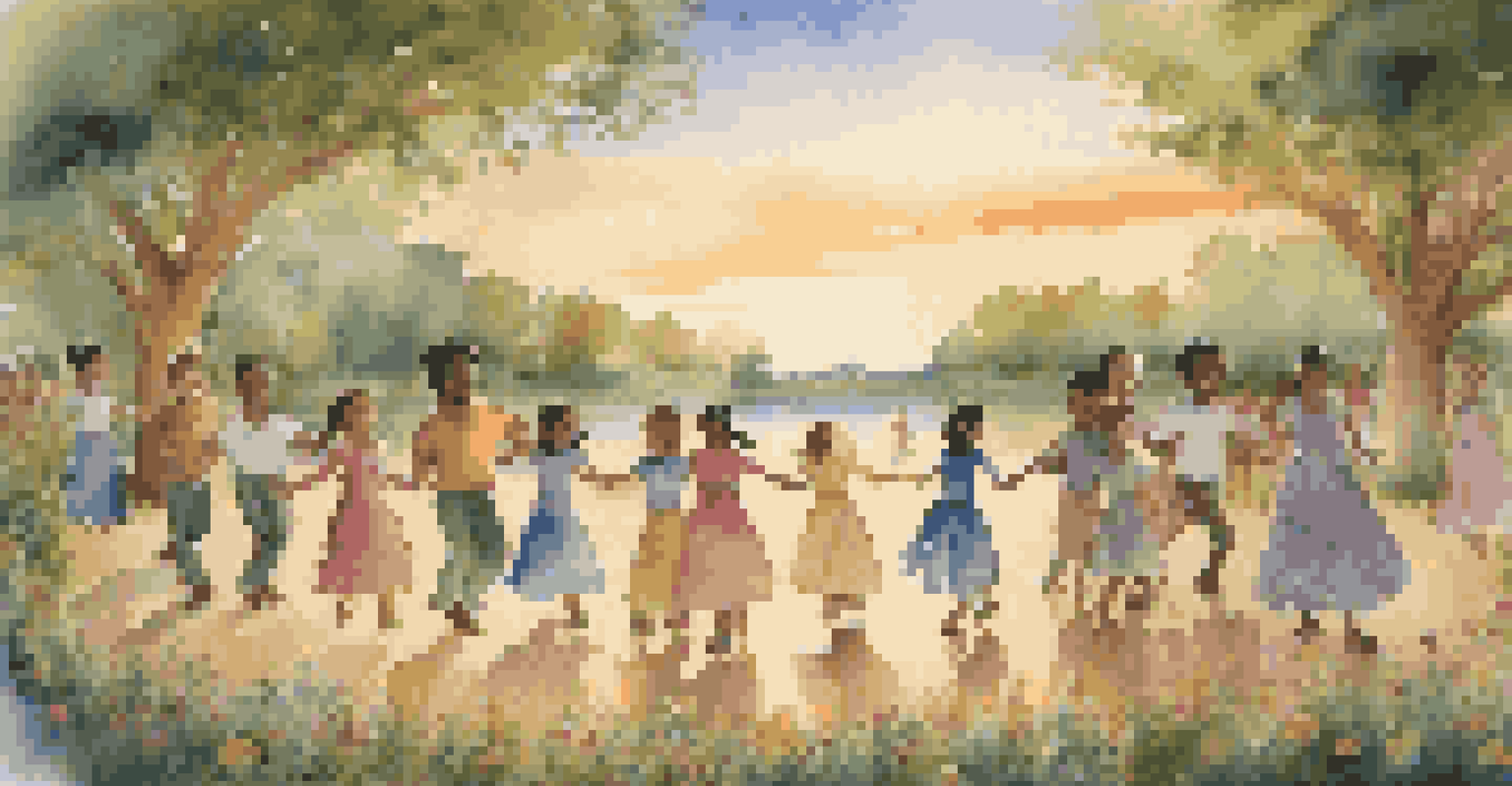Dance and Storytelling: The Narrative Power of Folk Traditions

The Essence of Dance in Folk Traditions
Dance is not just a form of entertainment; it's a vital expression of culture and identity. In folk traditions, dance embodies the essence of a community's values, beliefs, and history. Through rhythmic movements and gestures, dancers convey emotions and stories that might otherwise remain untold.
Dance is the hidden language of the soul.
The simplicity of folk dance allows it to be accessible to everyone, inviting participation from all age groups. This communal aspect transforms individual expression into a shared experience, reinforcing community bonds. As people come together to dance, they weave a tapestry of stories that connect generations.
Consider traditional dances like the Irish jig or the African tribal dance, where each step and movement tells a story of heritage and struggle. The narrative power of these dances is profound, as they carry the weight of history and the spirit of the people who perform them.
Dance as a Storytelling Medium
Storytelling through dance is an art form that transcends language barriers, allowing audiences from diverse backgrounds to connect. Through movement, dancers can express joy, sorrow, conflict, and resolution, painting a vivid picture that words alone cannot capture. This non-verbal communication is particularly powerful in folk traditions, where stories are often passed down orally.

For instance, Native American powwow dances narrate tales of hunting, love, and community, using intricate footwork and body language. Each movement is deliberate, chosen to resonate with the audience on an emotional level. This connection fosters a deeper understanding and appreciation of the culture from which the dance originates.
Dance as Cultural Expression
Folk dance embodies a community's values, beliefs, and history, serving as a vital expression of culture and identity.
Moreover, the choreography often reflects the rhythm of the accompanying music, creating a harmonious blend of sound and movement. When both elements come together, they enhance the storytelling experience, making it more immersive and memorable.
Cultural Preservation Through Dance
Folk dances serve as a cultural preservation tool, safeguarding stories and traditions that might otherwise fade away. In an ever-globalizing world, these dances help maintain a community's unique identity, passing down values from one generation to the next. By participating in these dances, individuals play a crucial role in preserving their heritage.
Dancing is like dreaming with your feet.
Many communities host festivals and events that celebrate their traditional dances, creating opportunities for education and engagement. These gatherings not only attract locals but also draw visitors who are eager to learn about the culture. As they witness the stories come to life through dance, they gain a richer understanding of the community's history and values.
In this sense, folk dance becomes a living archive, where the narratives of ancestors are continuously retold and revitalized. Each performance is an opportunity to honor the past while inspiring future generations to embrace their cultural roots.
Dance and Community Identity
The relationship between dance and community identity is profound, as folk traditions often reflect the collective experiences of a group. Dance provides a platform for communities to express their triumphs, struggles, and aspirations, fostering a sense of belonging among members. In many cultures, participating in traditional dances strengthens social ties and instills pride in one's heritage.
For example, the Flamenco dance of Spain embodies the spirit of its people, showcasing their passion and resilience. Each performance not only tells a story but also serves as a reminder of the community's strength and unity. This shared experience reinforces the notion that everyone has a role in shaping their identity through storytelling.
Storytelling Through Movement
Dance transcends language barriers, allowing dancers to convey emotions and narratives that foster deeper cultural understanding.
As communities evolve, so too does their dance, adapting to contemporary influences while still honoring traditional narratives. This fluidity ensures that the dance remains relevant, allowing new stories to emerge and be integrated into the existing folk tradition.
The Role of Music in Dance Storytelling
Music is an integral component of dance storytelling, providing the heartbeat that drives the narrative forward. The melodies and rhythms inspire movement, and together with dance, they create a cohesive storytelling experience. In folk traditions, the music often reflects the cultural context, enhancing the emotions conveyed through the dance.
Take the example of the Russian folk dance, where the lively melodies encourage energetic movements that embody joy and celebration. The musicians and dancers work in tandem, with each influencing the other's performance. This synergy not only captivates the audience but also deepens the storytelling impact.
Furthermore, music can evoke specific memories or feelings associated with the stories being told. This emotional connection is what makes the experience so powerful, as both the dance and the music resonate with the shared history of the community.
Modern Interpretations of Folk Dance
While traditional folk dances are steeped in history, modern interpretations are breathing new life into these art forms. Contemporary choreographers draw inspiration from folk traditions, infusing them with innovative elements that appeal to today's audiences. This fusion of styles not only keeps the storytelling aspect alive but also makes it more accessible to younger generations.
For example, dance troupes may incorporate hip-hop elements into traditional folk dances, creating a dynamic performance that resonates with modern viewers. This blending of old and new allows for the exploration of current themes while honoring the roots of the dance. It also invites a wider audience to engage with folk traditions, sparking curiosity and appreciation.
Preserving Heritage with Dance
Folk dances play a crucial role in cultural preservation, passing down stories and traditions to future generations.
Moreover, these modern interpretations often lead to collaborations between different cultural backgrounds, fostering cross-cultural dialogue. This exchange of ideas enriches the storytelling aspect, as diverse perspectives are woven into the fabric of the dance.
The Future of Dance and Storytelling
As we look to the future, the narrative power of dance in folk traditions remains vital. With the rise of digital media, there are new platforms for sharing these stories with a global audience. Social media and online streaming allow traditional dances to reach people who may never experience them in person, broadening the scope of cultural exchange.
However, with this opportunity comes the responsibility to preserve the authenticity of the dance. It’s essential to honor the origins and meanings behind these traditions while embracing innovation. By doing so, we can ensure that the narratives continue to resonate and evolve without losing their essence.

Ultimately, dance will continue to serve as a powerful storytelling medium, bridging gaps between cultures and generations. The stories of the past will inspire the dances of the future, perpetuating the cycle of cultural expression and connection.